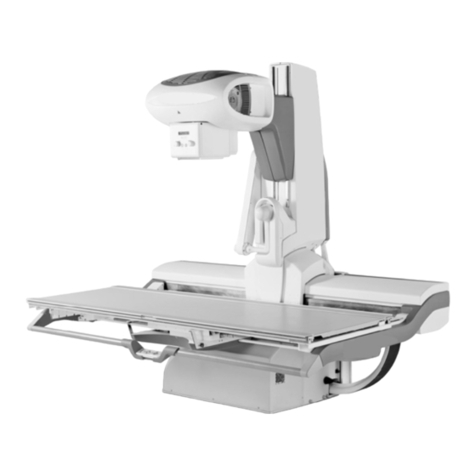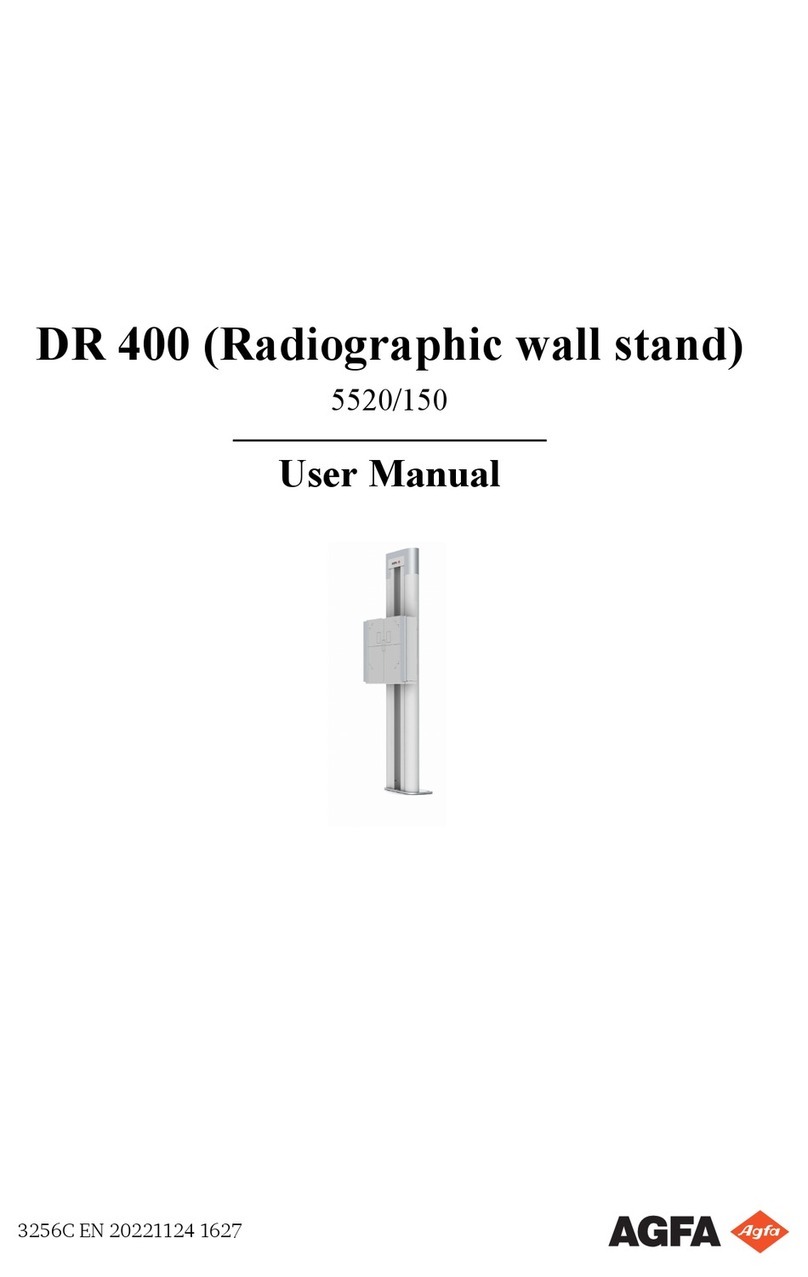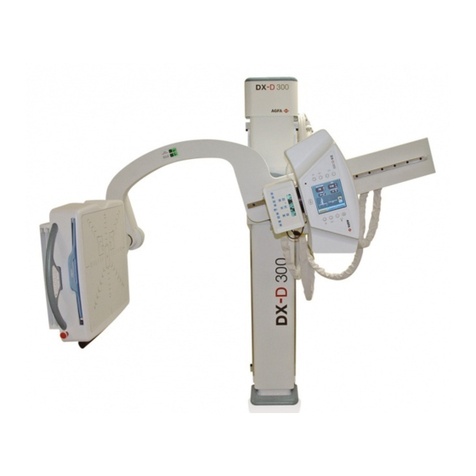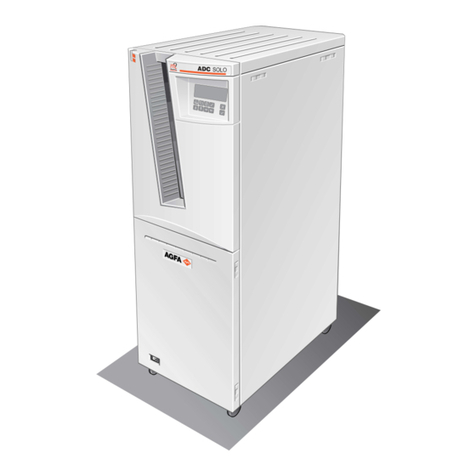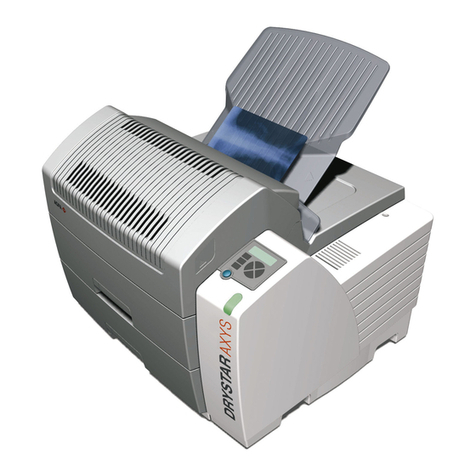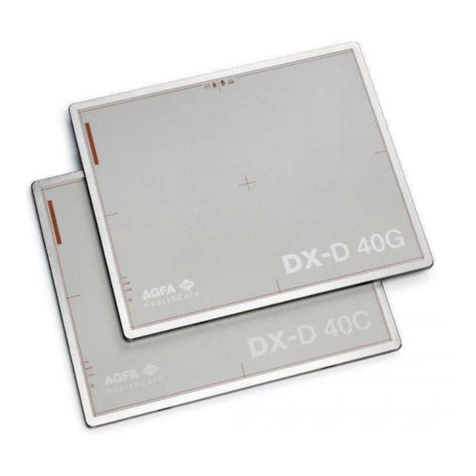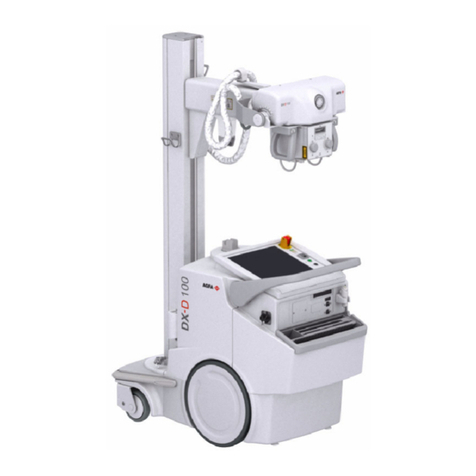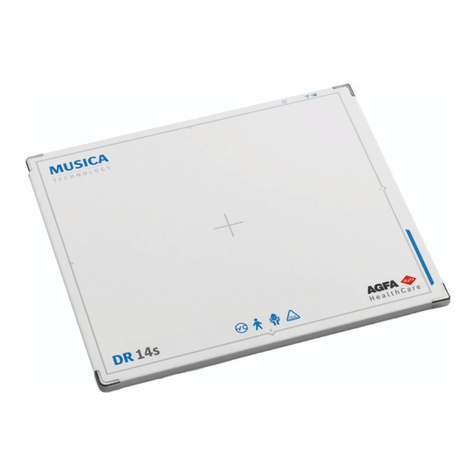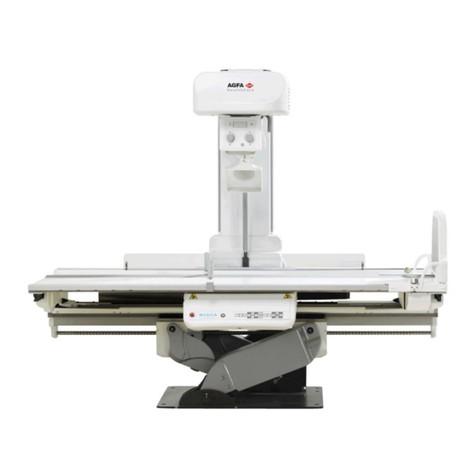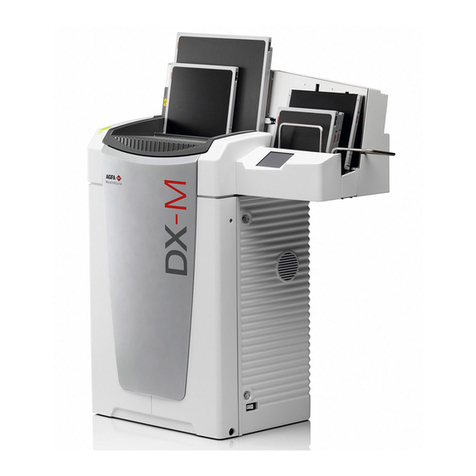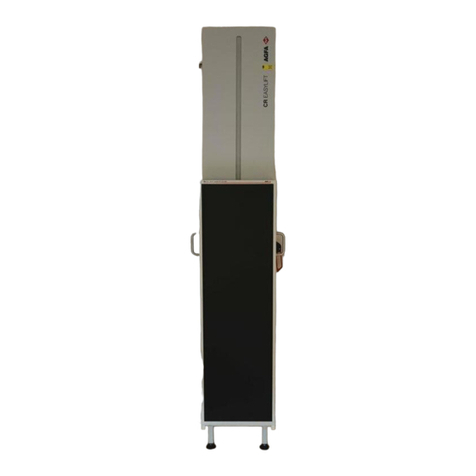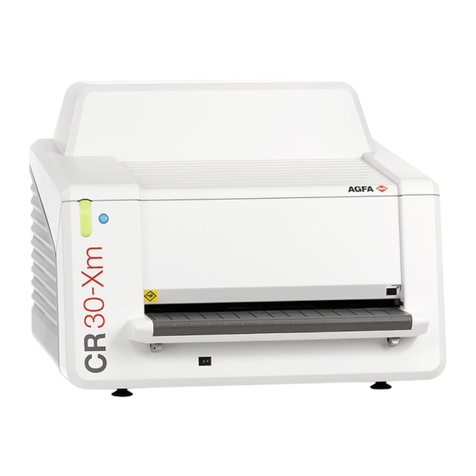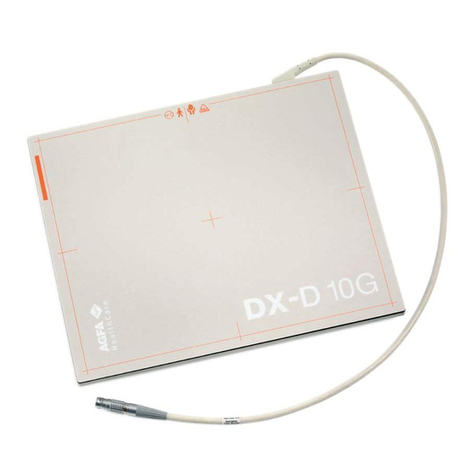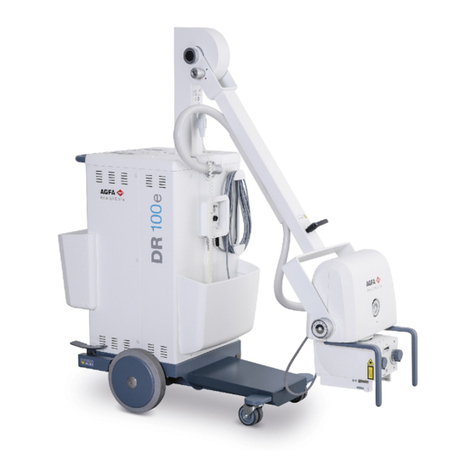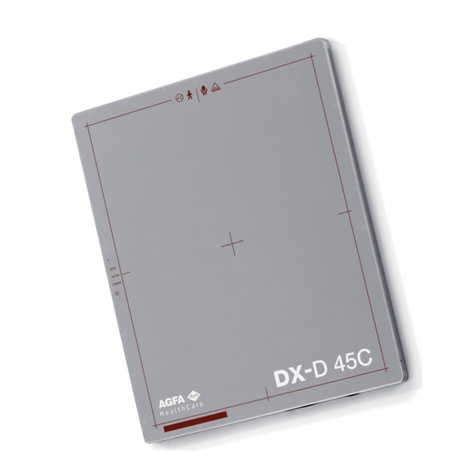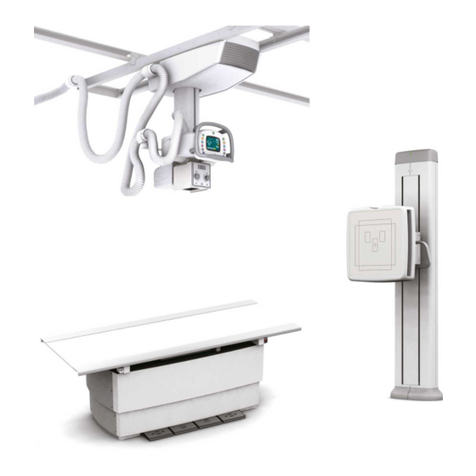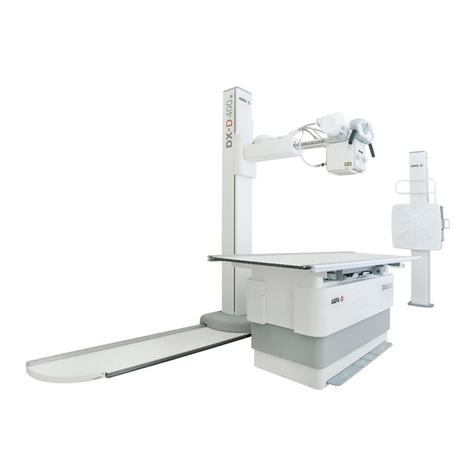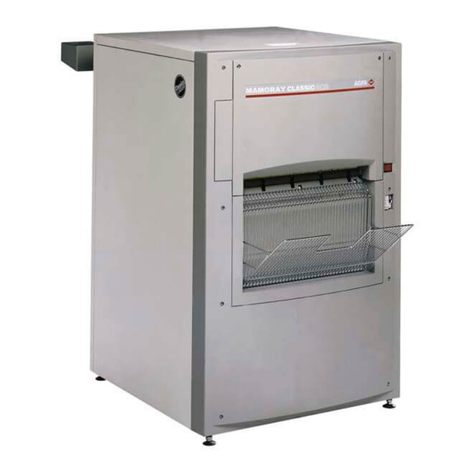
DX-D 100 Mobile X-ray Unit
User Manual
0188K EN 20201116
REVISION HISTORY
REVISION DATE REASON FOR CHANGE
AJUL 06, 2010 First edition
B JUN 10, 2011 General Update and DR Detector options
C MAY 27, 2013 IEC Standards; DR Detector options; Battery
Charge Level Indicators
D NOV 21, 2013 Displacement Controls Update and Collimator
E JAN 29, 2015 Telescopic Column (Option); Lead-Crystal Batteries;
Displacement Controls; Storage Bin for Wireless
configuration; Factors: Power Line Operation,
Maximum Input Power, Battery Capacity, Maximum
Symmetrical Radiation Field, Environmental
Conditions; General Update
F JUL 30, 2015 Designated Significant Zones of Occupancy,
Distribution of Stray Radiation; Control Panel:
ON/OFF Keypad for Access Control (Option);
Additional Features: Bluetooth (Option), LED Beacon
Light, Tube Rotation Indicators; Advisory Indications
in Section 3.8 of Motion Controls; Information for
Collimator Rotation; Configuration for Wireless DR
Detectors Options, Integrated Battery Charger;
Weight for Mobile units with Standard Column;
Illustrations, Pictures and General Update
G OCT 05, 2016 General Update
H SEP 20, 2018 New Label; Intended Use, IEC Standards Update;
General Cautions; Removed information for Gel
Batteries; Hand-grips Support (option); New Storage
Bin; New Detectors; Back-up Cable and Illustrations
I NOV 13, 2019 Mains Connection and Line Circuit Breaker; Manual
Clutch Screws; Parking Position of the Arm;
Collimator Controls, Dosimetry, Optional Wired
Configuration for some Wireless DR Detectors and
Illustrations
J MAY 22, 2020 Battery Charge Level Indicators; Appendixes A and B
and General Update
KNOV 16, 2020 Displacement Controls
This Document is the English original version, edited and supplied by the manufacturer.
The Revision state of this Document is indicated in the code number shown at the bottom of this page.






